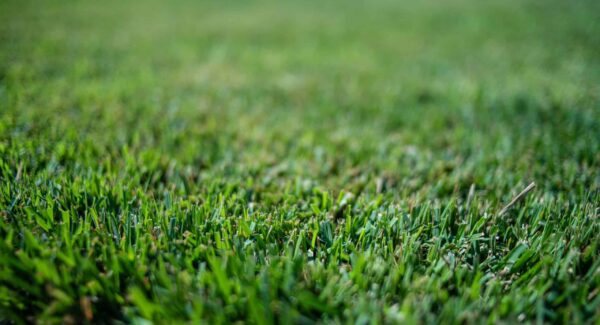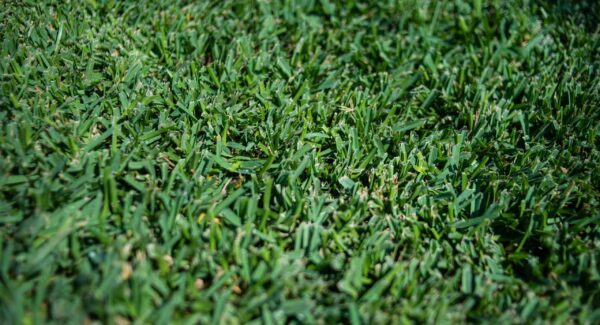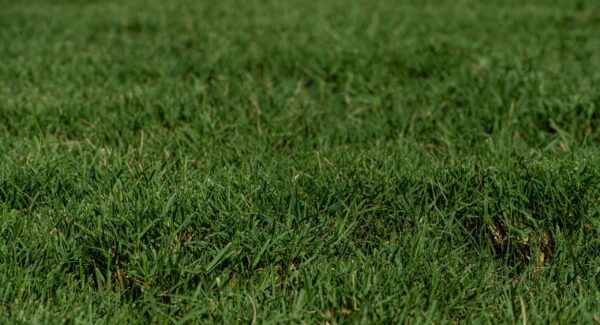5 Best Grass Sod Varieties For Dogs in Texas
Introduction
Selecting the appropriate grass sod for your yard can significantly affect its appearance and its ability to endure the wear and tear of having a dog. Choosing the right grass type gives your pet an optimal play area while maintaining a lush and vibrant yard.
If you’ve experienced lawn damage because of your furry friend, it is clear that not all grasses are created equal. In the following lines, you will learn more about top grass options for dog owners in Texas.
When deciding on the best grass for dogs to complement your yard, consider factors such as your local climate and soil pH levels, as well as considerations like durability, comfort, grass allergies, drought resistance, or maintenance needs.
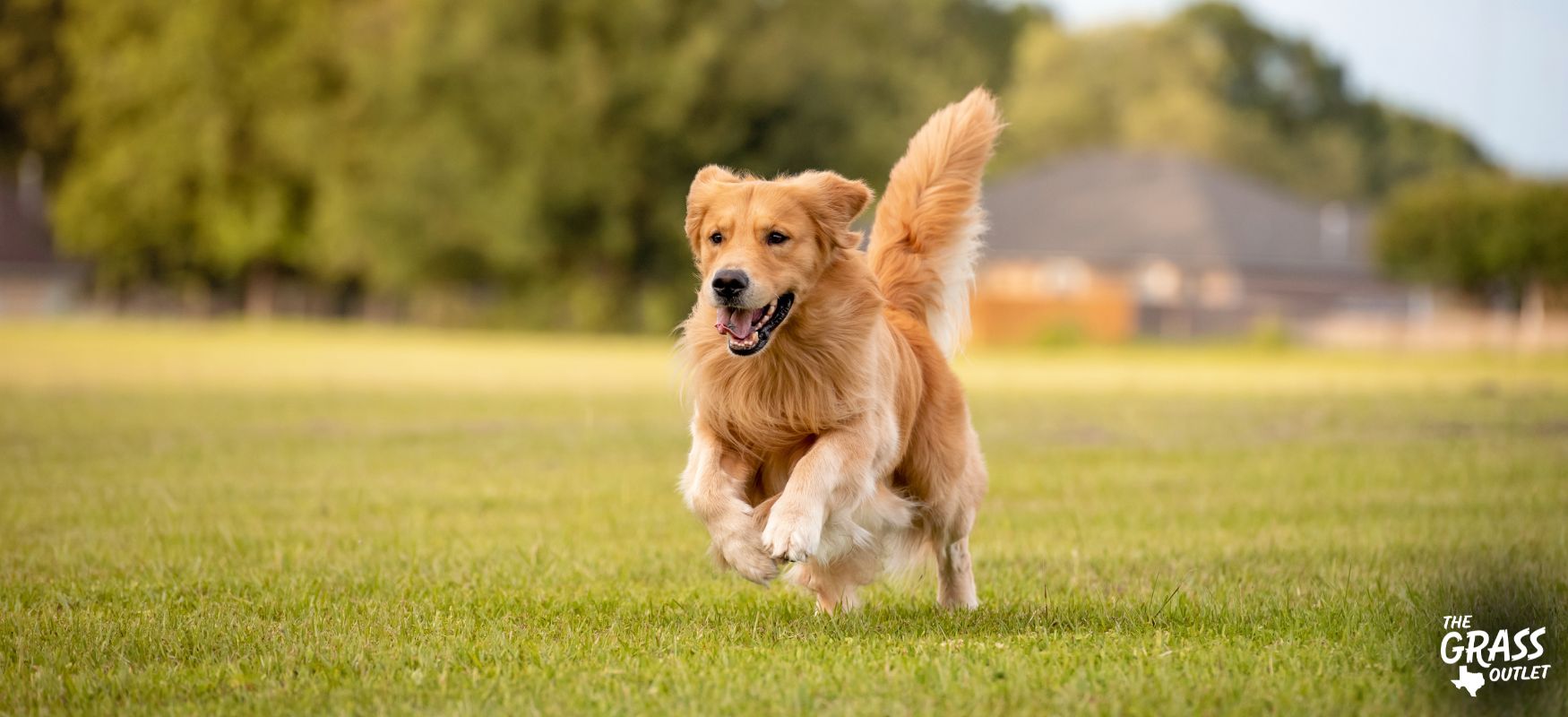
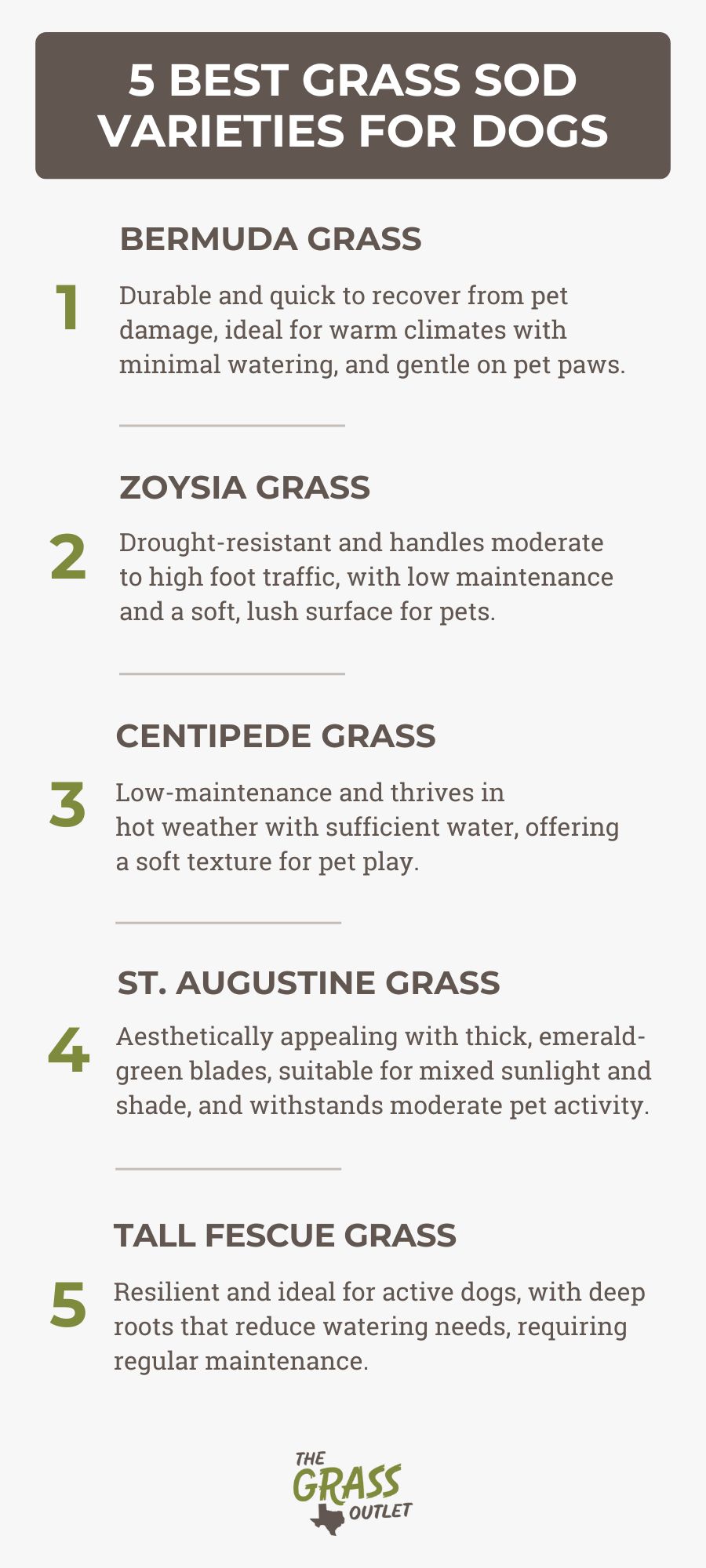
Bermuda Grass
Bermuda grass is known for its durability. It is ideal for yards with more frequent foot traffic, including playful dogs and activities like running, jumping, and playing, without displaying signs of wear and tear. Moreover, suppose your dog is fond of digging, scratching, or urinating, causing damage. In that case, Bermuda grass can recover swiftly compared to other species as it spreads to fill in bare spots.
Its strong roots allow it to quickly recover from any damage caused by pets, making it perfect for areas frequented by furry friends. It also has a fine texture that’s gentle on pet paws.
This grass thrives in warmer climates, preferring full sun, but doesn’t need constant watering. However, its fast growth rate means you’ll need to mow it frequently and provide regular fertilization. Dog owners often prefer Bermuda grass for its resilience, especially in sunny yards with active pets. Just remember, keeping up with mowing is essential to maintain its beauty.
Among various season grasses, Bermuda’s robust nature and optimal care needs make it a standout choice.
Zoysia Grass
Zoysia thrives in warmer climates and is resistant to drought, meaning it doesn’t need frequent watering. Its ability to drain well makes it suitable for various soils, though some types are more adaptable.
Zoysia provides a medium to high level of wear tolerance and is also tolerant of shade. Similar to Bermuda grass, Zoysia is pet-friendly and can spread and recover from damage caused by your dog’s activities. Its deep root system enables it to withstand heavy rains and strong winds, making it an ideal choice for a pet-friendly lawn, especially if your furry friend tends to scratch or dig.
Once established, Zoysia forms a vibrant, lush lawn that provides a soft surface for dogs to lounge and play on comfortably. Its thick lawn does not require frequent mowing. Reduced mowing requirements and watering needs make Zoysias a great option if you’re looking for lower-maintenance grass. It is also resistant to pests and diseases, ensuring your dog stays safe while enjoying playtime in the yard.
However, despite its durability and tolerance to high foot traffic, it takes more time to recover from damage. While it grows slowly and remains short, it lacks the rapid recovery rate of Bermudagrass when faced with wear and tear.
Further, Zoysia grass grows highly densely, making it more challenging for dog urine to travel to the soil. This means that the urine remains very concentrated at the surface and can more easily cause nitrogen burn spots.
Carefully tailored to suit the unique climatic conditions of Texan urban areas, this warm-season grass shows remarkable resilience to drought and shade and moderate cold resilience, distinguishing it from other grass varieties.
Centipede Grass
Centipede grass is another right option if you’re seeking a low-maintenance lawn that’s still resilient to dogs. It’s renowned for its minimal upkeep compared to other grass varieties. However, there are some considerations: centipede grass requires specific growing conditions to thrive, such as more acidic soil and an intolerance to alkaline soil.
Yet, once established in the right environment, it transforms into a durable and easy-to-care-for lawn option.
Centipede grass thrives in hot weather but needs sufficient water to stay healthy, which will also help dilute dog urine. One of the highlights for dog owners is the soft texture, which allows dogs to enjoy rolling and playing on this soft green carpet.
St. Augustine Grass
St. Augustine grass remains a beloved choice among homeowners due to its lush and appealing appearance. This warm-season grass, characterized by its thick blades boasting an emerald-green hue, has been specially adapted for the climate conditions of Texas. These varieties are particularly well-suited for residential lawns, especially those areas that experience a mixture of sunlight and shade. 
While St. Augustine grass is a popular option for many homeowners, you might wonder if it’s suitable for your furry companion. The answer is positive. St. Augustine grass is safe for dogs and other pets to walk and play on. It’s frequently utilized in dog parks because it creates a dense cover that can withstand moderate pet activity.
St. Augustine grass offers commendable shade tolerance, though it does require regular mowing during the growing season and has moderate to high watering needs. Keeping your mower blades sharp before each mowing session can significantly reduce the risk of diseases, particularly during the spring and fall seasons.
Tall Fescue
Tall fescue stands out as a proper choice for dog owners residing in cooler regions of Texas.
This grass variety is particularly well-suited to active dogs, especially larger breeds, thanks to its robust nature and deep roots, providing exceptional resilience against play and activity.
The deep root system of tall fescue enables it to endure dry spells, reducing the need for frequent watering and allowing it to tolerate some shade. However, tall fescue requires adequate fertilization, aeration, and regular mowing to foster its deep-root development and overall turf resilience. With proper maintenance, it exhibits tolerance to a wide range of diseases.
Additionally, tall fescue’s bunch-type growth pattern means it doesn’t repair itself as quickly as other grasses when damaged. If your dog’s playtime leaves behind dead spots, overseeding in the fall is necessary to restore the lawn’s uniform appearance.
Final thoughts
If you’re searching for the ideal grass for dogs in Texas that can endure the climate and meet your pet’s requirements, the grass options are some of the top choices for creating a resilient, pet-friendly lawn.
If you contemplate replacing your grass with a particular species, selecting a variety that thrives in your climate is crucial.
Aside from weather considerations, several other factors should influence your decision, including your pets’ activity level, the amount of sunlight your lawn receives, and your commitment to lawn maintenance. However, the optimal selection ultimately hinges on your lawn’s and your dogs’ unique requirements.
If you find yourself unsure of where to begin or in need of expert guidance, consider enlisting the assistance of The Grass Outlet professional. We can provide insights and professional help to choose and plant the most suitable grass type.
